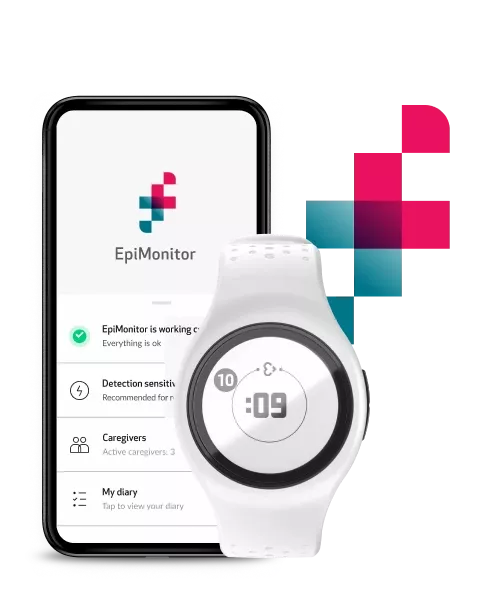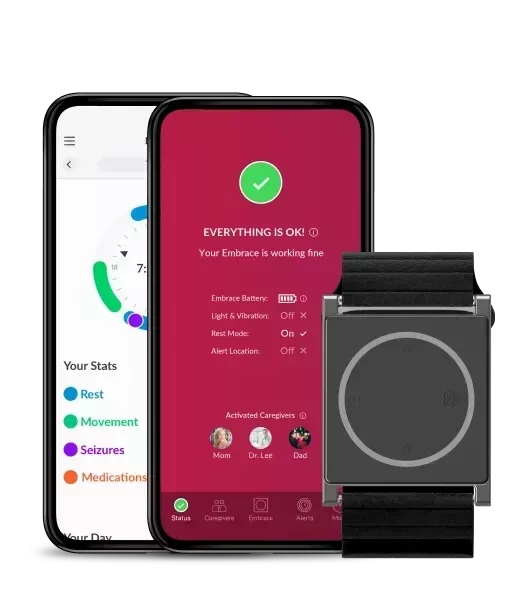Living with photosensitive epilepsy: A guide to triggers and management

In 1997, an episode of Pokémon aired in Japan that triggered seizures in hundreds of children watching. This incident thrust photosensitive epilepsy into the spotlight, highlighting the unexpected dangers of flashing lights for people with this condition.
Even today, many people grapple with the challenges of photosensitive epilepsy. This article aims to help. While there's no cure, this guide offers practical strategies for managing photosensitive epilepsy. We'll delve into the causes and triggers, equipping you with the knowledge to navigate your environment and live a fulfilling life.
What is photosensitive epilepsy?
Photosensitive epilepsy is a specific type of epilepsy where seizures are triggered by flashing lights or patterned light-dark contrasts.
Yet, the causes of photosensitive epilepsy are not completely understood. While its prevalence in the general population is low (1/4000) it affects 2-14% of people with epilepsy.
Studies have also found that females are twice as likely to suffer from photosensitive epilepsy as males and incidences of it are five times more likely in 7–19-year-olds. Moreover, people with generalized epilepsy, particularly juvenile myoclonic epilepsy are more likely to be photosensitive.
However, it’s important to distinguish between general photosensitivity and photosensitive epilepsy. General photosensitivity includes an unusual reaction to light that can lead to pain, itching, and rashes. Having general photosensitivity does not mean you have epilepsy or are likely to have a seizure. If you are concerned you should talk to a clinician.
What causes photosensitive epilepsy
The exact causes of photosensitive epilepsy are not completely understood. However, studies suggest that the part of the brain responsible for vision (the visual cortex) may be hypersensitive in people with photosensitivity. This can cause brain cells to fire abnormally, especially in response to flickering lights, potentially leading to seizures.
Yet, other brain regions may also be involved in photosensitivity. Scientists are exploring connections between the brain circuits triggered by flashing lights and those responsible for generating brain waves associated with visual processing. Moreover, other studies have found people with unique variations of the CHD2 gene have higher rates of photosensitive epilepsy.
Scientists are actively researching the causes of photosensitive epilepsy. Understanding these factors is crucial for developing better treatments and preventative measures.
Is photosensitive epilepsy hereditary?
Yes, photosensitive epilepsy may have a hereditary component. Studies suggest up to half of the relatives of people with photosensitive epilepsy may experience seizures or abnormal brainwave responses triggered by light (photo-convulsive EEG response). This suggests genes play a major role in determining susceptibility.
However, it's not a guaranteed inheritance pattern. Other factors likely influence risk. While the link is significant, more research is needed to pinpoint the specific genes involved and how they interact with other risk factors.
What can trigger photosensitive epilepsy seizures?
For individuals with epilepsy, managing triggers is crucial for seizure control. Photosensitive seizures are specifically triggered by flashing or flickering lights. Common triggers include:
- Electronic Devices: Flickering screens, especially when viewed up close, can cause photosensitive epilepsy seizures. This includes watching television, playing video games, and using computer screens.
- Strobe Lighting: Intense strobe lights like those in bars and concerts.
- Natural Light: Sunlight reflecting off water or filtering through blinds can also be potential triggers.
- Visual Patterns: Studies have shown that visual patterns, such as stripes with contrasting colors, can trigger seizures in some individuals.
However, while these situations may trigger photosensitive epilepsy seizures, they are not always problematic. The likelihood of a seizure depends on several factors, including:
- Brightness: Brighter lights are more likely to trigger seizures.
- Frequency: Flashing lights between 15 and 25 flashes per second are most likely to cause seizures.
- Color: Red light (wavelength 660-720 nm) is more likely to trigger seizures than blue or white light.
- Exposure Duration: Longer exposure to triggering lights increases the seizure risk.
Interestingly, other factors can also play a role. For example, studies suggest that the risk of photosensitive epilepsy seizures from playing video games goes beyond flickering lights. The excitement and rapid hand movements during gameplay can also contribute to the risk.
Can photosensitive epilepsy be cured?
Unfortunately, there isn't currently a cure for photosensitive epilepsy. However, there are effective management strategies to reduce the impact it has on your life. These strategies include:
- Medication: Anti-epileptic drugs can help regulate brain activity and decrease the frequency of seizures.
- Trigger Avoidance: Identifying and avoiding triggers like flashing lights is crucial for preventing seizures.
- Management: According to studies closing one eye and turning away from the cause of the photosensitivity can help.
Strategies to live with photosensitive epilepsy in modern life
Without a cure for photosensitive epilepsy, it’s important to consider how you can adapt to and shape your environment. Yet, that is easier said than done. The increasing use of digital technologies in modern life from television to social media can trigger photosensitive epilepsy.
However, avoiding digital technologies and going out with friends is not practical or fun. Therefore, we have outlined some strategies below to help.
While the following steps provide guidance, please consult a medical professional if you are concerned.
1. Use an epilepsy wearable for empowerment
Using an epilepsy wearable offers insight, security and independence. These wearables can monitor for certain seizure activity, helping you to identify the causes of your photosensitive epilepsy. For instance, Empatica’s EpiMonitor (in the US) and Embrace2 (outside the US) are FDA-cleared and send alerts to designated caregivers. This can be particularly helpful in situations where you might be alone or where a seizure could go unnoticed by others.
Moreover, the EpiMonitor can help you detect patterns in your activity, sleep and seizures, providing richer insights. This can help you become more proactive and use data to manage your photosensitive epilepsy.
2. Use a modern television and monitor and sit further away
Avoiding screentime is almost impossible. Whether it’s watching your favorite Netflix show or working in front of a computer, you will likely be exposed to photosensitive epilepsy triggers.
However, in studies, scientists have found older TVs with a 50 Hz refresh rate are more likely to cause photosensitive epilepsy seizures than newer models with a 100 Hz refresh rate. LCD and plasma TV screens in particular present less risk.
Additionally, sitting at least 2m from a screen in a well-lit room can reduce the risk of photosensitive epilepsy seizures, as can avoiding looking at a screen while sleepy.
For optimal results, consider reducing the brightness of your screen and using a screen filter.
3. Avoid video games when you feel fatigued
Video games are a great source of entertainment. However, they have been found to trigger photosensitive epilepsy seizures due to flashing lights.
Thankfully many games will carry a photosensitive epilepsy warning. Therefore, consider avoiding these games where possible. However, this is not a foolproof strategy. Photosensitivity is often person dependent so some video game scenes may cause a seizure in some people and not in others.
Therefore, follow scientific advice and avoid playing video games if you are drowsy, fatigued or have insomnia.
4. Do sunglasses help with photosensitive epilepsy? Going outside with confidence
Sunglasses can be a valuable tool for managing photosensitive epilepsy, particularly for those triggered by specific light conditions. However, it’s important to note that sunglasses may not be a universal solution for everyone with photosensitive epilepsy. The effectiveness can vary depending on the individual and the specific light triggers involved.
However, sunglasses that may help include:
- Polarized glasses: Studies show polarized sunglasses contain a special filter that minimizes the sun's glare, a significant seizure trigger for some people. Polarized sunglasses are particularly helpful in environments with bright, reflective surfaces like water or open fields.
- Color-tinted Lenses: Studies suggest that color-tinted lenses may offer some protection against light-induced seizures. Blue-tinted lenses appear to be the most effective, potentially by filtering out specific wavelengths of light that can be problematic
5. Use social media safely by disabling auto-plays
People spend almost 2.5 hours per day on social media, but for those with photosensitive epilepsy, navigating these platforms can be a challenge. Unlike television or video games, social media content often lacks warnings about potentially triggering visuals, such as flashing lights or rapid patterns.
One significant concern is auto-playing videos. As you scroll through your social media feed, these videos can start unexpectedly, potentially triggering a photosensitive epilepsy seizure. The good news is that most social media apps allow you to disable autoplay functionality within their settings. This can significantly reduce your exposure to unexpected triggers.
For the best results consider:
- Disabling auto-play in your phone settings. Both iOS and Android phones have this feature and it prevents videos from automatically playing within your messages and while you browse websites
- Navigate to each social media platform and disable auto-plays.
6. Going out with friends
Many bars and clubs have strobe lighting, meaning people with photosensitive epilepsy can feel anxious going on a night out with their friends. Yet, this is a double-edged sword as anxiety can further increase the risk of epileptic seizures.
Therefore, make sure to plan your night. Don’t be afraid to share your concerns with your friends so they can help create a safe environment. Moreover, call the venue before you attend and ask if they use strobe or flashing lights. Many responsible venues are willing to hear your concerns and offer assistance.
However, if strobe lighting does appear while you are out, remember to close one eye and turn away from the light.
Don’t let epilepsy dim your light
Living with photosensitive epilepsy can present challenges, but it doesn't need to define your life. You can effectively manage your condition by understanding your triggers and adapting your environment to you and your needs.
Remember, you have the power to control your epilepsy, not the other way around. If you have concerns, ensure you talk to your clinician, family and friends. Invest in an epilepsy wearable like Empatica’s EpiMonitor or Embrace2 for added safety and the ability to analyze your seizures.
By developing knowledge, and awareness, and adopting a positive attitude, you can continue to live a fulfilling and vibrant life.



